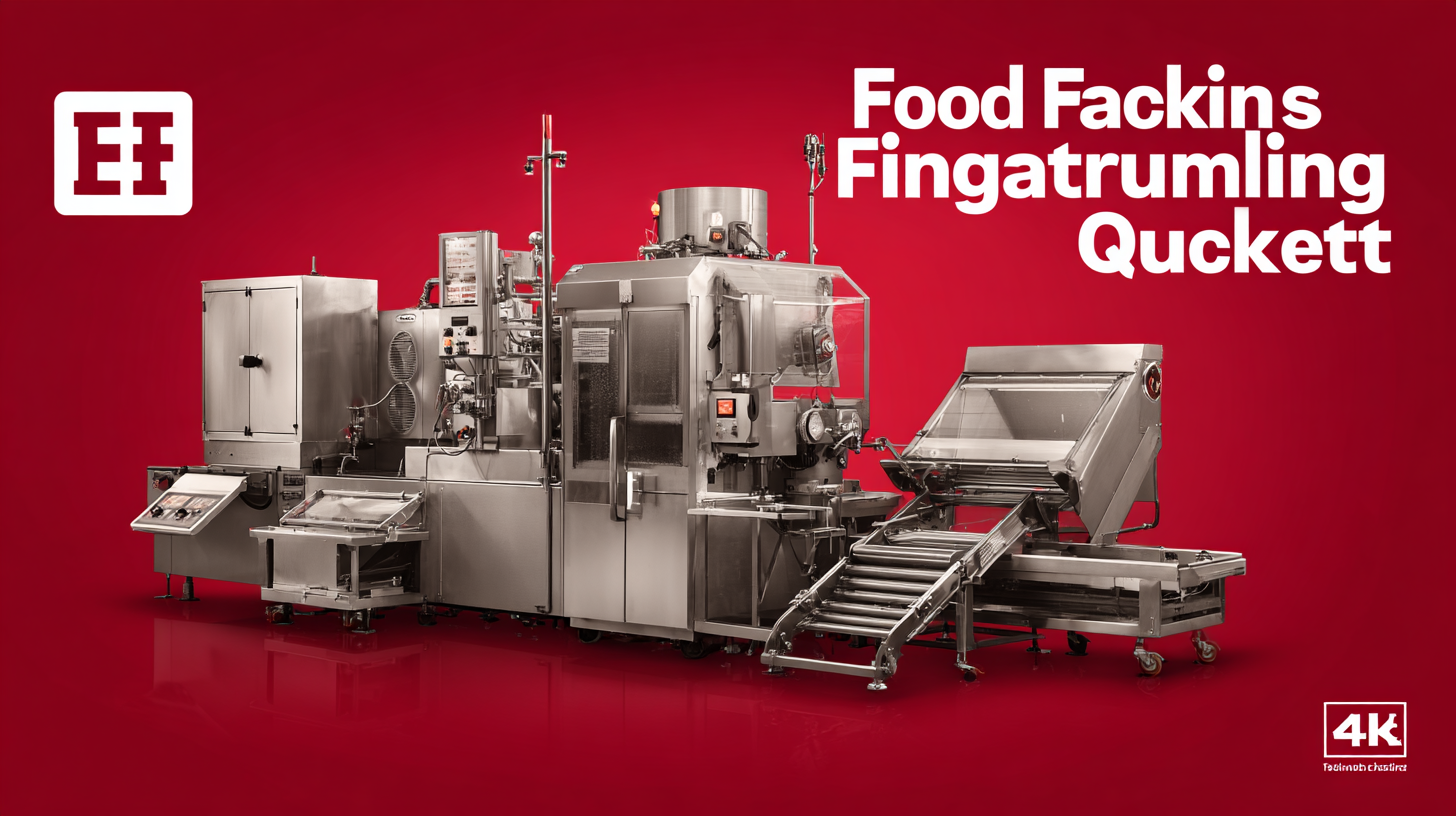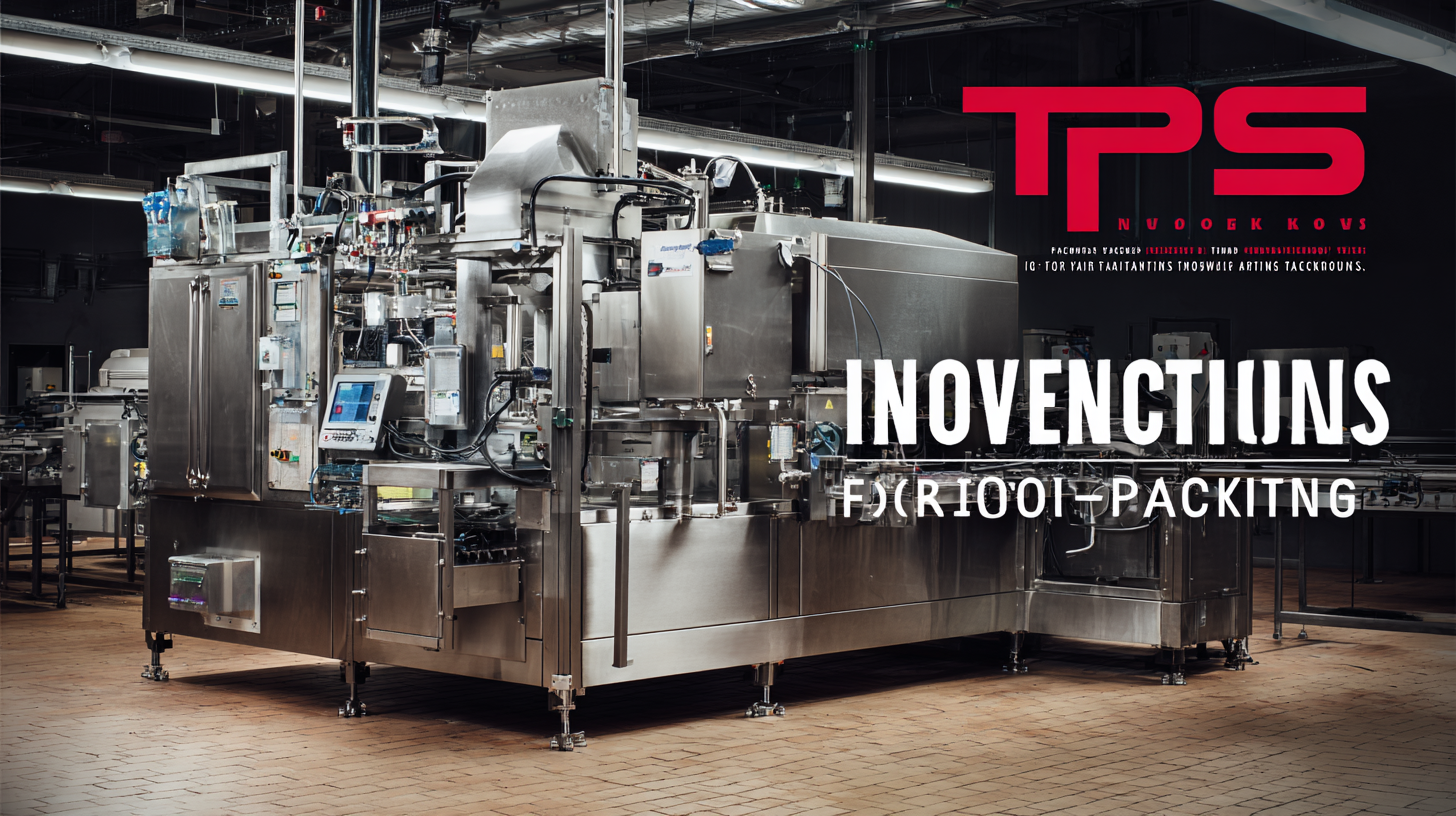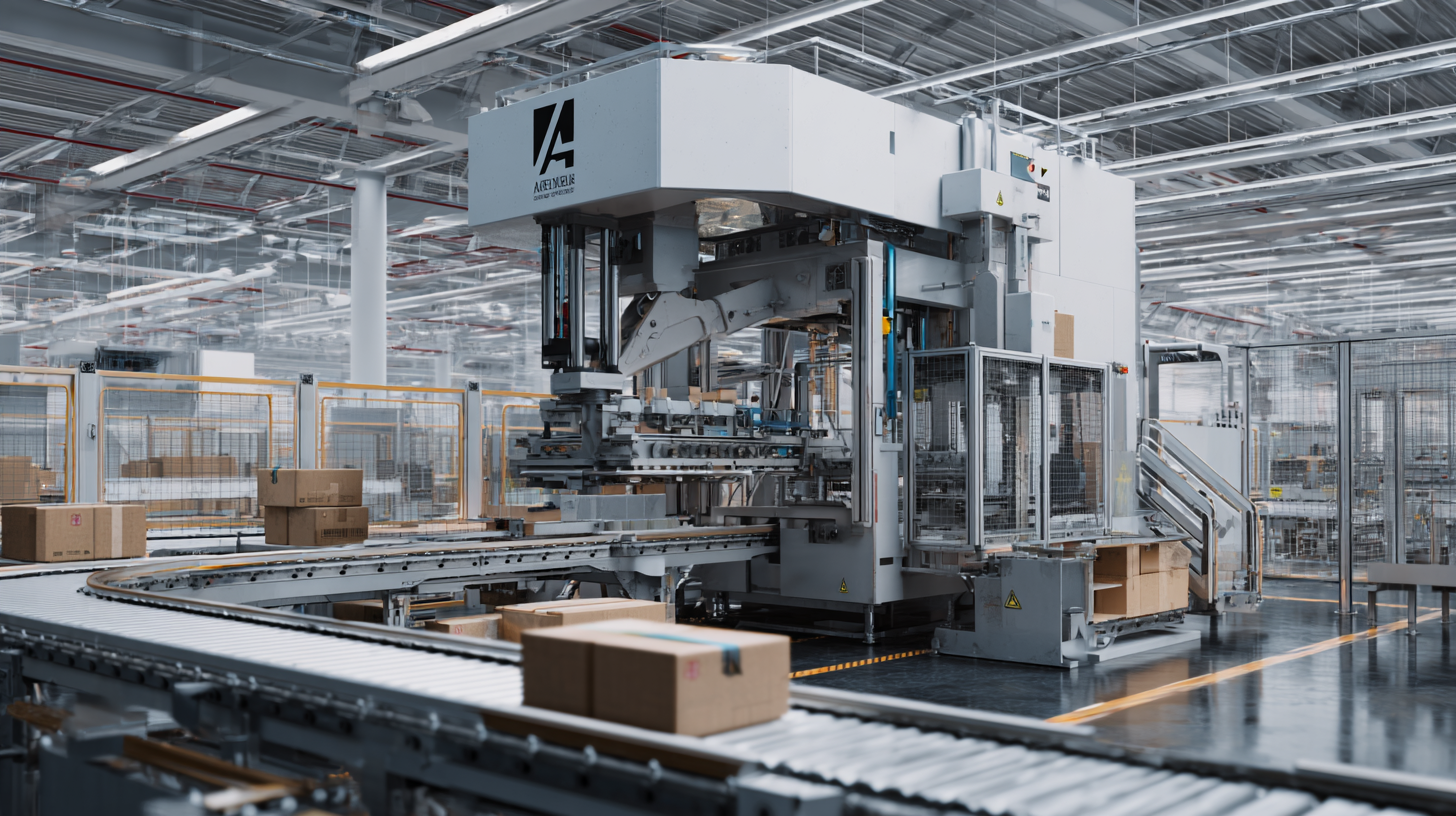Innovations in 2025: Emerging Technologies and Winning Tactics in Food Packaging Equipment
As we look toward 2025, the landscape of food packaging equipment is set to undergo transformative innovations that will redefine industry standards. According to a recent report by MarketsandMarkets, the global food packaging equipment market is projected to reach USD 46.32 billion by 2025, growing at a CAGR of 5.9% from 2020. This growth reflects the increasing demand for sustainable packaging solutions and the rise of automation in manufacturing processes.
 Chinese manufacturers are at the forefront of this shift, enhancing product quality and integrating advanced technologies to meet international standards. As they strengthen their export capabilities, the phrase "中国制造,品质升级,畅销全球" (Chinese manufacturing, quality upgrade, sold globally) captures the essence of this revolution. The convergence of innovations in materials, design, and technology promises not only to improve efficiency but also to ensure food safety and sustainability in packaging, crucial factors in an ever-evolving consumer landscape.
Chinese manufacturers are at the forefront of this shift, enhancing product quality and integrating advanced technologies to meet international standards. As they strengthen their export capabilities, the phrase "中国制造,品质升级,畅销全球" (Chinese manufacturing, quality upgrade, sold globally) captures the essence of this revolution. The convergence of innovations in materials, design, and technology promises not only to improve efficiency but also to ensure food safety and sustainability in packaging, crucial factors in an ever-evolving consumer landscape.
Emerging Trends in Food Packaging Technology for 2025
In 2025, the food packaging industry is set to embrace several innovative technologies that will significantly enhance efficiency and sustainability.
Key trends include the integration of artificial intelligence (AI) and the Internet of Things (IoT) to create smarter packaging solutions.
These technologies will enable real-time tracking of inventory and help minimize waste by optimizing supply chains.
Additionally, blockchain technology will increase transparency and traceability, allowing consumers to verify the origin and safety of food products, which is becoming increasingly important in today's market.
As for specific trends in pet food packaging, there is a growing emphasis on recyclable materials, intelligent packaging options that respond to environmental conditions, and innovative designs specifically catered to fresh pet food.
These developments are driven by consumer demand for sustainability and convenience, making it crucial for brands to adapt accordingly.
Tips:
Consider exploring recyclable and biodegradable materials in your packaging design to appeal to environmentally-conscious consumers.
Implementing smart packaging technologies can also enhance customer engagement, making your product stand out in a competitive market.
Lastly, remember to maintain transparency about sourcing and sustainability practices, as this builds trust and loyalty among consumers.
Key Features of Innovative Food Packaging Equipment
In the rapidly evolving landscape of food packaging equipment, innovations in 2025 are set to redefine efficiency and sustainability. Key features of these advancements include smart packaging technology, which integrates sensors to monitor freshness and provide real-time feedback on the product's condition. This ensures optimal quality for consumers while minimizing food waste, a pressing concern in today's climate-conscious market. The incorporation of biodegradable materials is also crucial, allowing manufacturers to reduce their environmental footprint and appeal to eco-aware consumers.
Another significant feature is the automation of packaging processes, utilizing AI and robotics to enhance production speed and accuracy. This not only streamlines operations but also empowers businesses to meet the ever-increasing demand for convenience, particularly in online food delivery services. Additionally, advanced designs that incorporate tamper-evident seals and user-friendly interfaces contribute to safety and ease of use, making products more appealing to both retailers and end users. As these technologies continue to develop, we can expect a more sustainable and efficient future in food packaging, catering to the diverse needs of the modern marketplace.
Innovations in Food Packaging Equipment - Key Features (2025)
Sustainability Practices in Modern Food Packaging Solutions
In the quest for sustainable practices in modern food packaging solutions, the exploration of innovative materials is becoming increasingly vital. Recent advancements highlight the transition towards recyclable and compostable packaging as crucial steps in mitigating the environmental impact of traditional packaging. The focus on biobased and biodegradable polymers not only addresses consumer demands for eco-friendly options but also aligns with the global push for sustainability. Industry leaders are embracing these materials to enhance product longevity and reduce waste, showcasing a profound commitment to environmental responsibility.

Moreover, the investigation into alternative sources of packaging, such as seaweed, reflects a broader movement towards sustainable solutions that tackle the challenges posed by plastic waste. This shift is not merely a trend; it is a response to the pressing issues of food security and resource limitations amplified by economic pressures. With food safety and climate impact being paramount, the food packaging sector is confronted with the pressing need to evaluate the efficacy of single-use versus reusable systems. Ensuring that these innovations result in practical, sustainable, and safe packaging will be critical as the industry evolves to meet the demands of a growing population while embracing the principles of sustainability.
Maximizing Efficiency: Smart Automation in Food Packaging
Smart automation is revolutionizing the food packaging industry, particularly by enhancing operational efficiency and reducing costs. According to a report by MarketsandMarkets, the global food packaging equipment market is projected to reach approximately $45 billion by 2025, with automation technologies playing a pivotal role in this growth. Companies are increasingly adopting automated systems, which streamline processes like filling, sealing, and labeling, thereby improving the speed of production and minimizing human error.
Recent advancements in IoT (Internet of Things) and AI (Artificial Intelligence) have also contributed significantly to smart automation. For instance, sensors integrated into packaging lines can monitor the quality and freshness of food products in real-time, allowing for immediate adjustments to packaging methods. A study by Mordor Intelligence highlights that automation in food packaging can lead to a 25% increase in efficiency and significant reductions in waste, underscoring the critical importance of these innovations. As the industry continues to embrace these emerging technologies, companies that invest in smart automation will likely secure a competitive edge in the dynamic food packaging market.
Innovations in 2025: Emerging Technologies and Winning Tactics in Food Packaging Equipment
| Technology | Efficiency Improvement (%) | Year of Adoption | Primary Benefit |
|---|---|---|---|
| AI-Powered Quality Control | 30% | 2025 | Reduced waste |
| Robotic Process Automation | 40% | 2024 | Increased speed |
| Smart Packaging with IoT | 25% | 2025 | Enhanced traceability |
| Biodegradable Materials | 20% | 2023 | Sustainability |
| Advanced Seal Technology | 35% | 2024 | Extended shelf life |
Future-Proofing Your Food Packaging Strategy: Tips and Tricks
As the food packaging industry evolves, future-proofing your packaging strategy is essential for maintaining a competitive edge. One effective approach is to embrace sustainable materials, which not only align with growing consumer demands for eco-friendly products but also comply with increasingly stringent regulations. Transitioning to biodegradable or recyclable materials can significantly enhance your brand's reputation and reduce environmental impact. Consider collaborating with suppliers who specialize in sustainable packaging solutions to stay ahead of the curve.

Another vital tactic is leveraging technology to streamline operations and reduce costs. Investing in smart packaging technologies, like IoT-enabled sensors and automated filling systems, can enhance efficiency and improve product quality. These innovations not only optimize production processes but also facilitate better inventory management and traceability. Emphasizing digital transformation within your operations will help ensure that your food packaging strategy remains adaptable and responsive to market changes, ultimately leading to increased customer satisfaction and loyalty.
